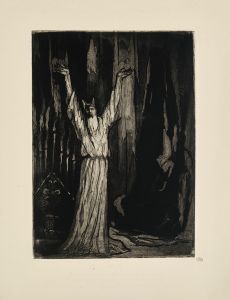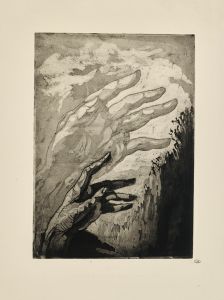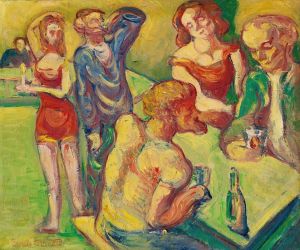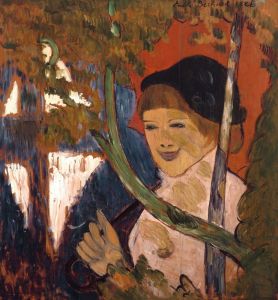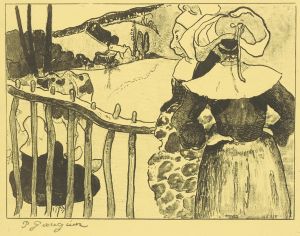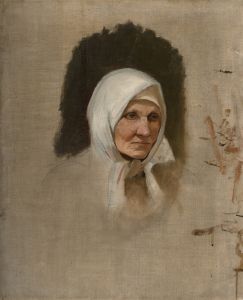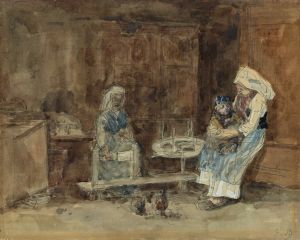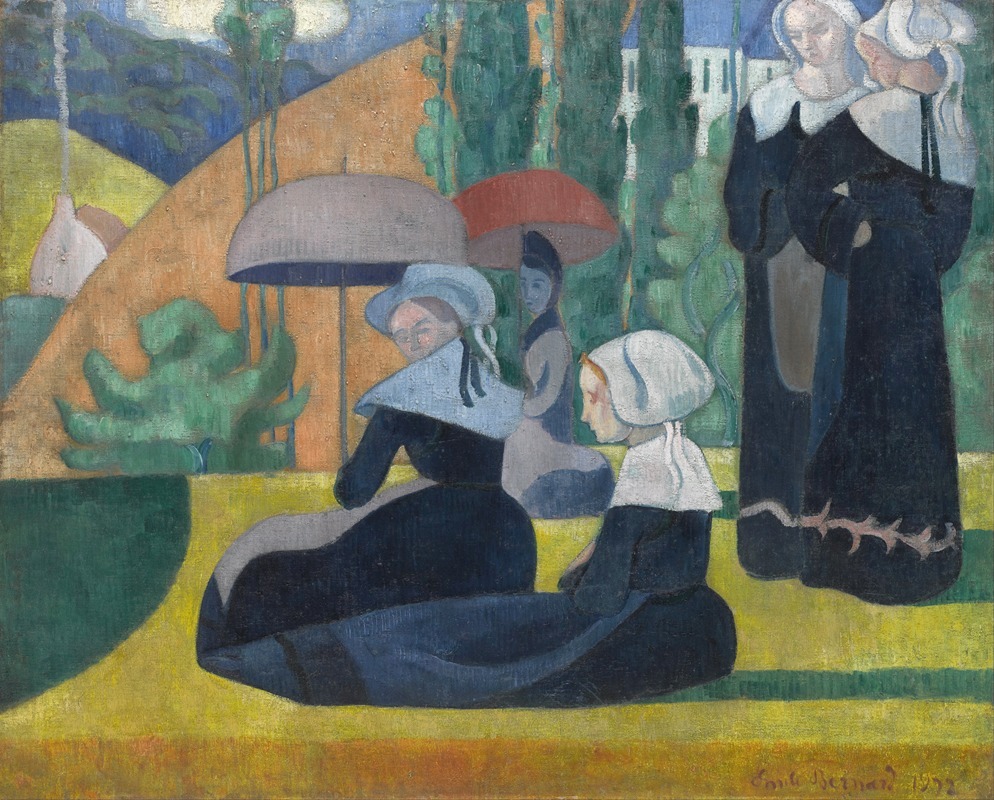
Breton Women with Umbrellas
A hand-painted replica of Emile Bernard’s masterpiece Breton Women with Umbrellas, meticulously crafted by professional artists to capture the true essence of the original. Each piece is created with museum-quality canvas and rare mineral pigments, carefully painted by experienced artists with delicate brushstrokes and rich, layered colors to perfectly recreate the texture of the original artwork. Unlike machine-printed reproductions, this hand-painted version brings the painting to life, infused with the artist’s emotions and skill in every stroke. Whether for personal collection or home decoration, it instantly elevates the artistic atmosphere of any space.
Breton Women with Umbrellas is a painting created by the French Post-Impressionist artist Émile Bernard in 1892. This artwork is an example of Bernard's distinctive style, which was heavily influenced by the Symbolist movement and his collaboration with other avant-garde artists of the late 19th century, including Paul Gauguin. Bernard is known for his role in the development of Cloisonnism, a technique characterized by bold outlines and flat areas of color, which is evident in this painting.
The painting depicts a group of Breton women, dressed in traditional regional attire, holding umbrellas. The scene is set in Brittany, a region in northwestern France that Bernard frequently visited and often depicted in his works. Brittany's rural landscapes, customs, and traditional clothing were a source of inspiration for many artists of the time, including Bernard, who sought to capture the simplicity and spirituality of the region's culture.
In Breton Women with Umbrellas, Bernard employs a simplified and stylized approach to form and composition. The figures are outlined with dark contours, and the colors are applied in flat, unmodulated areas, emphasizing the decorative quality of the image. This technique reflects Bernard's departure from the naturalistic representation of earlier Impressionist works and his embrace of a more abstract and symbolic aesthetic. The painting's composition is carefully arranged, with the women positioned in a way that creates a sense of rhythm and harmony.
The subject matter of Breton women was a recurring theme in Bernard's oeuvre, as he was deeply interested in the traditions and way of life in Brittany. The use of umbrellas in the painting may serve as a practical detail, reflecting the region's often rainy climate, but it also adds a visual element that enhances the overall composition.
Émile Bernard's contributions to modern art, particularly through his innovations in style and technique, have been widely recognized. His works, including Breton Women with Umbrellas, are considered important examples of the transition from Impressionism to the more experimental and symbolic approaches that defined the late 19th and early 20th centuries.
The painting is currently housed in the Musée d'Orsay in Paris, France, where it is part of the museum's extensive collection of 19th-century art. The Musée d'Orsay is renowned for its holdings of works from the Impressionist and Post-Impressionist movements, making it a fitting home for Bernard's work.






